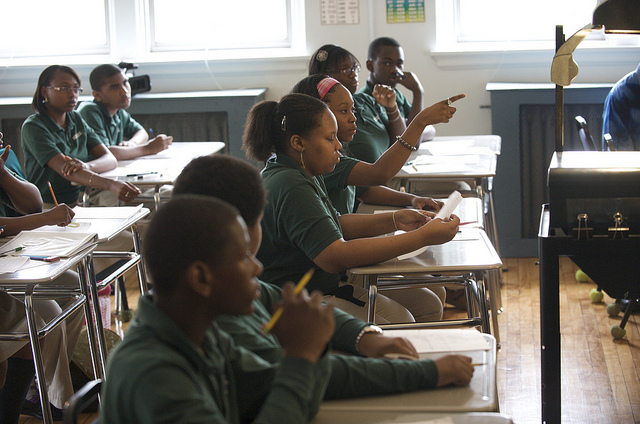5 TEFL Classroom Exercises for Teaching English Tenses
Tenses are time and time again noted as one of the most difficult aspects of English learning. Whether it’s the perfect or the continuous, students often get caught up in a mire of uncertainty and errors when it comes to reproducing this target language. To help you navigate the problem, we’ve put together this list of five TEFL classroom exercises that will help sort your future from your past…

Hot potato (with verbs)
A quirky and lively little starter, and one of those TEFL classroom exercises that gets the energy flowing, Hot Potato played with verbs is a fine choice for teaching this tricky part of English language skills to students. Like the classic Hot Potato game, when the class throw around a ball or even a real potato, as fast as they can, the variation involves picking a tense before you start and getting each student to say a verb in that tense before they are allowed to pass the buck on. It’s simple and easy to explain, involves moving – so great for younger and kinetic learners – and can be made harder by the introduction of a set of tenses, eliciting students to flit between different target languages fluidly.
Song Player
Song Player is sure to add a bit of spice to any lesson, and it engages those students with a passion for music too. Like many TEFL classroom exercises today, it’s best played in schools with hi-tech equipment like electronic whiteboards and the like, but can be done (with a little bit more planning) with just a cassette player. Start by prepping a series of popular classic songs or chart songs, and identify the use of unique tenses in each, making a note at the point in the song at which those tenses occur. Play the game by getting the students to do precisely the same thing: listen, identify and submit. You’ll have to pick your songs right so that the tenses are clear and not muddled, but once you’ve managed that, it’s just a case of sitting back and watching as learning becomes subsumed with casual listening!

The Mime
There are loads of ways to utilise The Mime game. Perhaps the most effective is to organise your classroom into groups of two or three, get each to come up with a short (one minute tends to suffice) play in which they are only allowed to mime out actions and storylines, and proceed to perform each before the whole class. The learning comes when you ask all students who aren’t performing to jot down what they think is happening. Naturally, this is best suited to teaching of present tenses, but you can also change things up and require students to switch the tense of their prose after the performance, which can be a tricky and testing way to see how smoothly your class can move from present to past to future.
On The Weekend
On The Weekend is a versatile game that can be played in a small five-minute segment at the end of a lesson, as a warm up at the start, or as a more substantial element to solidify learning about tenses. It’s best used to convey the ins and outs of the future tense, but can also be used for learning target language related to the past tense. The way it’s done is by simply asking students what they will do on the weekend, or – similarly – what they did last weekend. With that premise out of the way, you’re then free to choose the logistics of the game yourself. You can do it in pairs, as a group, as a competition (the team with the most mistakes loses) – the list goes on!

Story Builder
Story Builder is one of those fun introductory TEFL classroom exercises that can be used to recap and engage students before you delve into the lesson proper. It’s great for covering a wide selection of tenses and eliciting students’ voice in a variety of past, present and future. The rules? Organise your classroom in a circular format. One student starts the game by saying just one word. That word is then repeated by the next student in the circle, who also proceeds to add another in. The process continues until either someone makes a mistake in their ability to repeat all that’s been said before them, or you – as the teacher – pick up a mistake in tenses. The great thing about this one is that the limit on learning is set only by the imagination of the class and the amount of tenses they feel confident enough to use. That means it’s all very valuable Student Talk Time, and excellent for identifying those learners who are already ahead.
If you can think of any more effective TEFL classroom exercises that can be used to teach tenses, we’d love to hear about them in the comments below. And if you think it’s time you got TEFL qualified and into the classroom, be sure to check out our range of courses…

